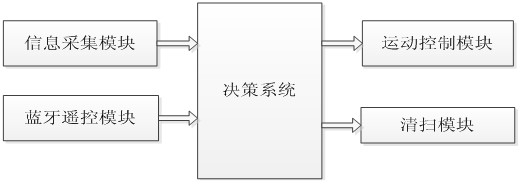Intelligent cleaning robot based on SLH89F5162
I. Project design background and overview
The cleaning robot is a kind of service robot. The so-called service robot refers to an autonomous or semi-autonomous robot that engages in non-production activities and can complete service work beneficial to human health. The home cleaning robot integrates many disciplines such as machinery, electronics, sensors, computers, control, machine technology, artificial intelligence, etc., and can automatically carry out home health services on the floor of the room. Cleaning robots have been used in many public places in some developed countries. As the cost-effectiveness of cleaning robots increases, it becomes possible to clean robots into the home.
As the main daily cleaning tool in today's home, household vacuum cleaners will form frequent interactions with users, and products and consumers will have a direct contact and communication. In recent years, smartphones have developed rapidly and become widely used, and have become a necessity for many people's lives and work. If they can complete the effective control of the vacuum cleaner with the smart phone in their hands, it will bring clean cleaning work for human beings. Great convenience. The combination of a smartphone and a cleaning robot combines the good operating experience of a smartphone with the convenient and efficient cleaning of a cleaning robot.
The "three-proof" single-chip microcomputer provided by the deep Lianhua MCU contest provides us with a good platform to realize our ideas, integrating key technologies in the field of smart phones and robotics. This topic aims to develop a low cost and sufficient A smart home cleaning robot that meets the needs of the family and is easy to use. It can replace the traditional family manual cleaning method to make the family life electrified and intelligent so that technology can better serve human beings.
Second, the project design principle
2.1, principle overview
The task that the cleaning robot needs to accomplish is to be able to automatically clean the floor in the room. When working, use various sensors to measure environmental information and make decisions to achieve cleaning while walking and completing scheduled tasks. A typical cleaning robot consists mainly of the following modules:
(1) Information acquisition module
(2) Decision module
(3) Motion Control Module
(4) Cleaning module
These four parts form the complete cleaning robot system, as shown in Figure 2-1. The information collection module returns the position information of the current cleaning robot, such as whether it encounters an obstacle, whether it encounters a staircase, etc., and then sends the information to the decision module for decision making, controlling the motion control module, causing the robot to turn or retreat, etc., in the robot movement At the same time, the cleaning module is cleaned to complete the task of cleaning the ground.

Figure 2-1 Typical composition of the cleaning robot system
Most Popular Panasonic Cells
NCR18650B 3400mAh
NCR18650A 3100mAh
NCR18650BM 3200mAh
NCR18650 2900mAh
NCR18650PF 2900mAh 10A discharge EV cell
NCA103450 2350mAh
NCA903864 3120mAh
NCR18500A 1940/2040mAh
NCR18650GA 3450mAh 10A diacharge EV cell
Features
High voltage of 3.6V lets you cut down on the number of batteries you use.
High energy density minimizes battery size and weight, making it perfect for use in small portable equipment.
No metallic lithium is used so charging and discharging are very safe.
No memory accumulation so it provides a full charge every time.
The outer casing in prismatic batteries is an aluminum alloy, so overall battery weight is lower.
Applications
Video cameras, digital still cameras
Cellular phones, PHS phones
Laptop computers
MP Players
Various portable equipment
PDAs
Panasonic 18650 Battery,Panasonic 18650,Panasonic Ncr18650b,Panasonic Lithium Ion Battery 18650
Asarke Industry Co., Limited , https://www.asarke-industry.com